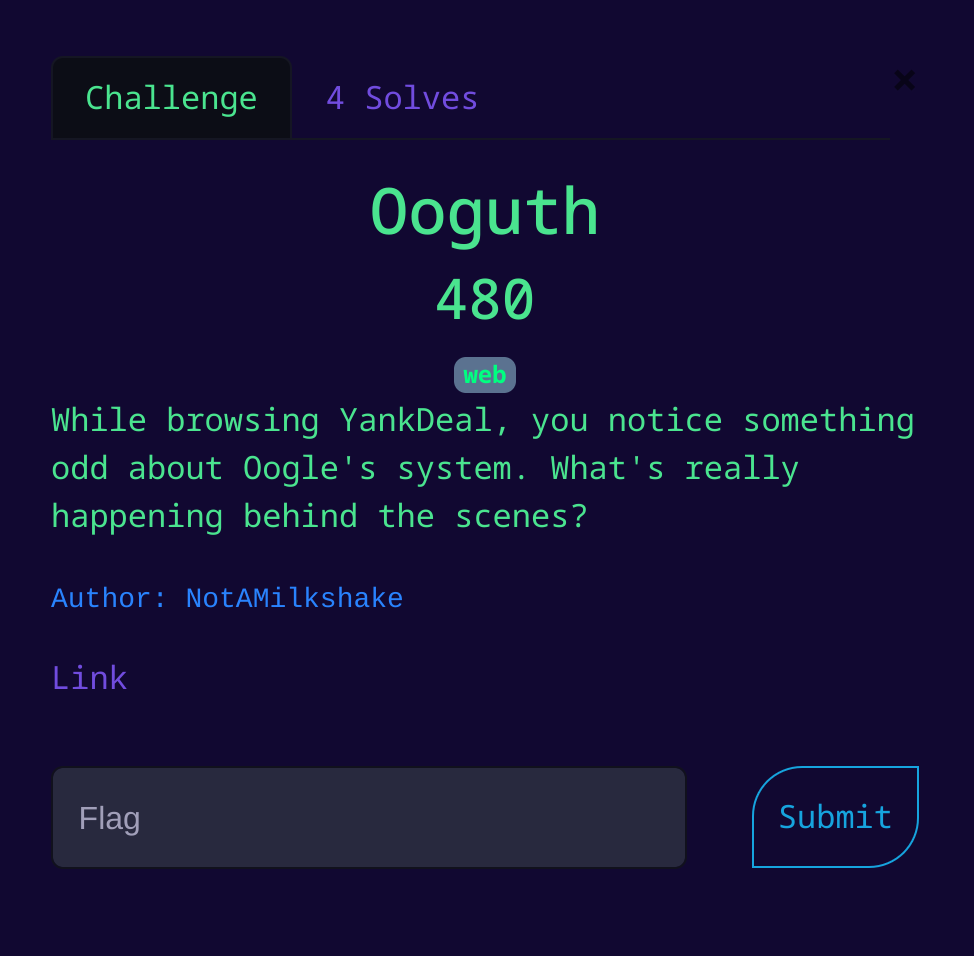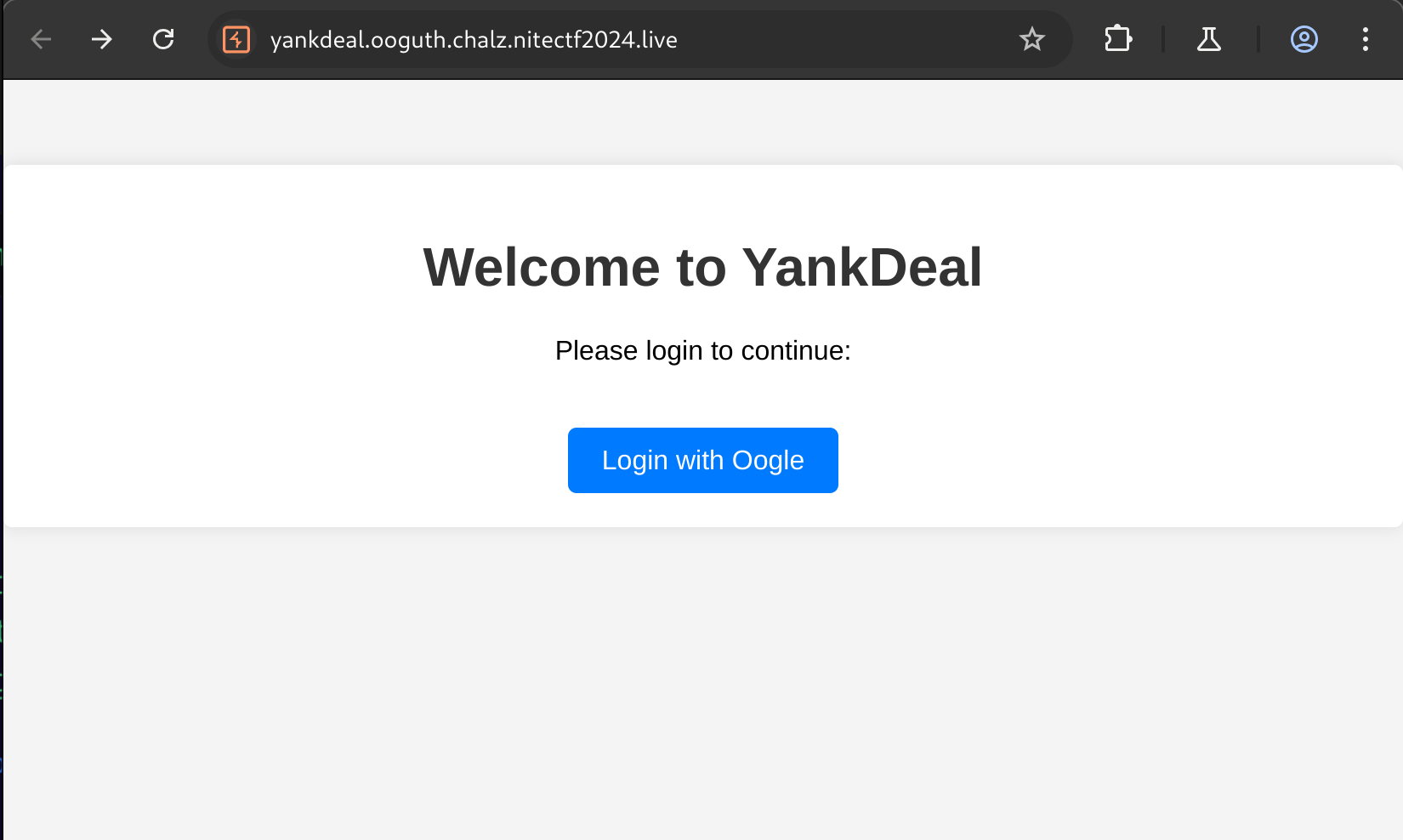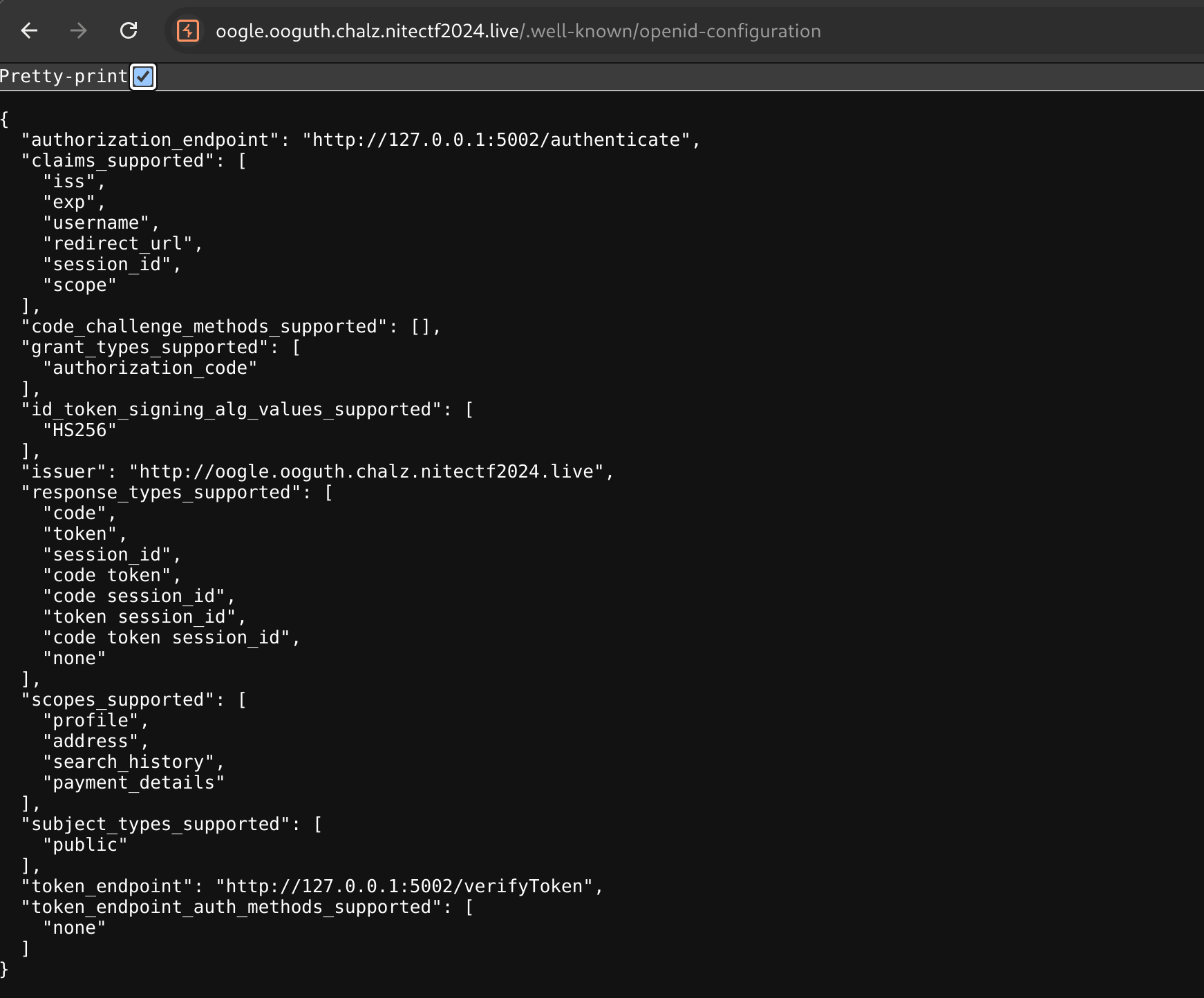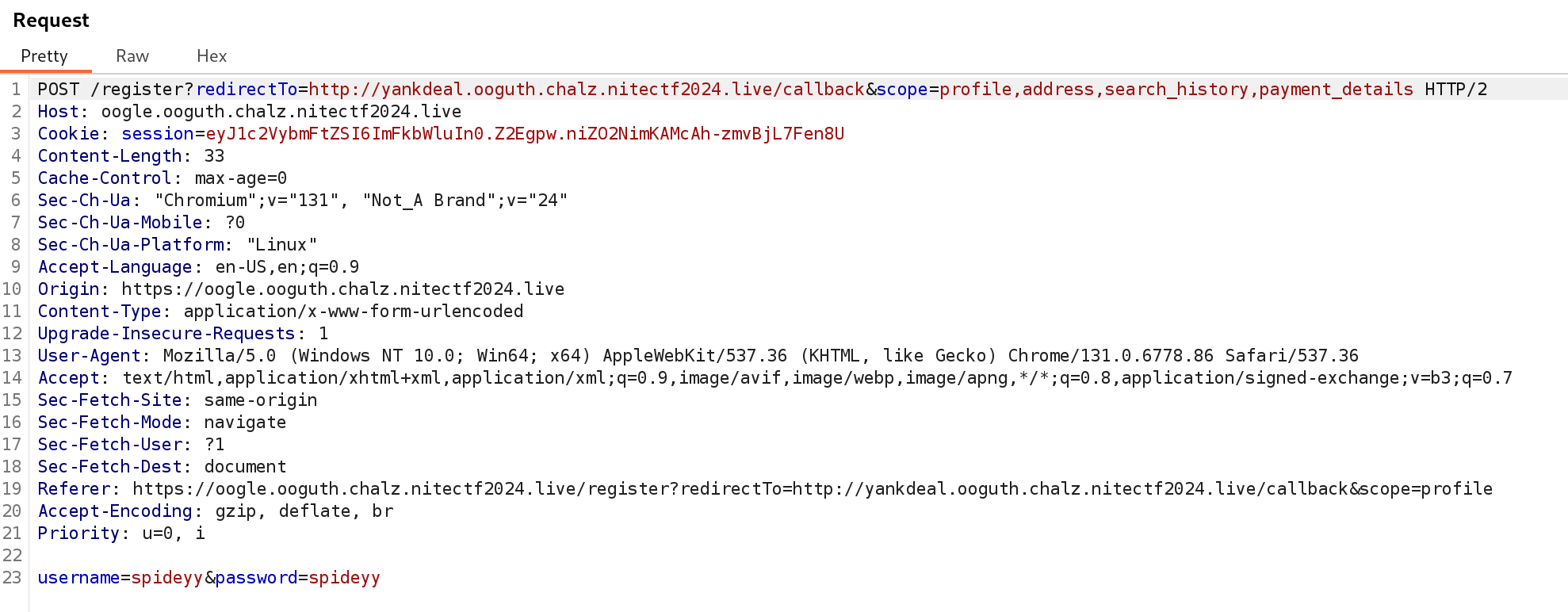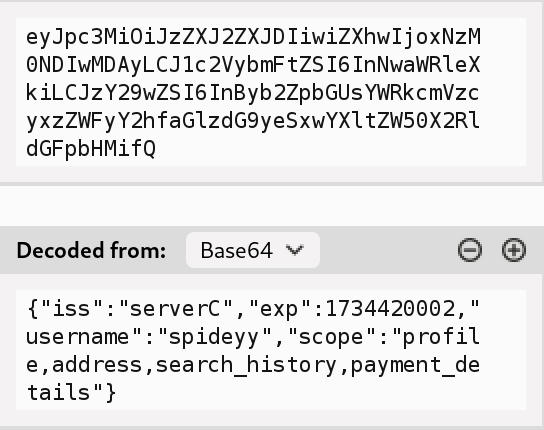Oogle and Ooguth, niteCTF 2024 Web Challenge
A deep dive into the OAuth and JWT manipulation techniques used in the Oogle and Ooguth CTF challenge, and how scope tampering can lead to uncovering hidden flags.
Challenge Description
In this challenge, OAuth and JWTs are put to the test, and with a little scope manipulation, we can uncover a hidden flag. Strap in as we break down this CTF, filled with OAuth flows, JWT tampering, and some strategic exploration.
The Setup:
We are given the following URL:
http://yankdeal.ooguth.chalz.nitectf2024.live/
Upon visiting the site, we are greeted with an invitation to login with Oogle. A bit of a cheeky twist on Google, right?
Clicking the Login with Oogle button redirects us to another page hosted at:
oogle.ooguth.chalz.nitectf2024.live/login
Here, we’re asked to complete the login process, after which we’re redirected back to the original site via the callback URL: http://yankdeal.ooguth.chalz.nitectf2024.live/callback
** Oogle OAuth Page**
What Did We Learn?
Upon registering, I noticed the scope parameter was set to profile:
1
POST /login?redirectTo=http://yankdeal.ooguth.chalz.nitectf2024.live/callback&scope=profile HTTP/2
What Exactly is “Scope” in OAuth?
Scope is a key concept in OAuth 2.0. It defines the level of access the application has to the user’s data. In this case, the profile scope limits access to basic user information. Simple, right?
“Scope is a mechanism in OAuth 2.0 to limit an application’s access to a user’s account.”
– OAuth 2.0 Docs
The app is requesting the profile scope when we log in. Not surprising — it’s the most common scope for basic information.
Digging Deeper:
After logging in with Oogle, I was able to add items to the cart, view the cart, and log out. But when I tried accessing the /profile endpoint, I was greeted with a 404: Not Found error. Hmm, something fishy here.
Three cookies were set: tokenC, session, and token.
By decoding the JWT in the token cookie, I realized the scope was also embedded in the token itself. This was a big clue — I could change the scope to gain more access.
Finding Available Scopes:
Now that I understood I needed to manipulate the scope, I googled how to find available scopes in OAuth. I stumbled upon two standard endpoints that often hold the key to this treasure trove:
/.well-known/oauth-authorization-server/.well-known/openid-configuration
And where did I learn this secret? From a gold mine for web exploiters:
PortSwigger’s OAuth guide.
With this knowledge, I uncovered a list of juicy scopes that could potentially unlock hidden parts of the app.
Time for Scope Tampering:
I realized the scope was embedded in the JWT, but without the secret key, I tried brute-forcing it with the rockyou wordlist — no luck there. So, I decided to tamper with the scope directly.
I modified the scope parameter during registration and login, setting every possible scope I could find. After all, why settle for one scope when you can have them all?
Success! The JWT now contained all the scopes I needed.
Now, Where’s the Flag?
With all scopes set, I started exploring the app’s endpoints. I accessed /payment_details, and voila! The flag was revealed:
1
Flag: nite{y0u_c4nt_h4ck_wh47_y0u_c4n7_f1nd_5550-1309-6672-6224}
Takeaways:
- OAuth scopes can limit what data an app can access — but they can also be manipulated.
- JWT tampering can help you bypass certain restrictions when done carefully.
- A little bit of exploration and scope experimentation goes a long way.
Until next time, happy hacking! 👾
